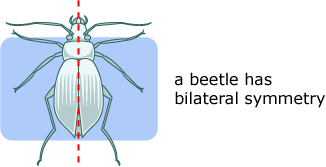Rich deposit of fossils from the Cambrian Period located in western Canada. This fossil bed is particularly valuable because the rarely fossilized soft parts of many ocean-dwelling organisms were preserved in these rocks along with their hard parts (e.g., the exoskeleton).
B
Buckland, William
(1784-1856)
English geologist and teacher of Lyell. Buckland is known for his attempts to reconcile religion and geology and for being among the first to identify dinosaur fossils. As a natural theologist, he believed that new life forms were continually created. He also believed that the Earth had been shaped by a series of catastrophes and tried to find evidence that a worldwide flood — Noah’s biblical flood — was the most recent of these.
Brongniart, Alexandre
(1770-1847)
French geologist and student of Cuvier who, along with his mentor, was one of the first to identify and cross-reference geologic strata using fossils, a methodological innovation credited to William Smith. Brongniart and Cuvier identified the same fossil layers all across the Paris region and showed that the regional fossil fauna had alternated between marine and freshwater forms over geologic time.
branch rotation
A technique for combating many misconceptions about phylogenetics by noting that branches can be rotated around any node on a tree and yield an equivalent phylogeny.
bottleneck
An event in which a population’s size is greatly reduced. When this happens, genetic drift may have a substantial effect on the population. In other words, when the population size is radically reduced, gene frequencies in the population are likely to change just by random chance and many genes may be lost from the population, reducing the population’s genetic variation. For a more detailed explanation, see our resource on bottlenecks in Evolution 101.
book lung
An organ used by many land-dwelling arachnids for breathing. It consists of a cavity in the abdomen containing a set of thin overlapping flaps (like the pages of a book). The inside of each flap is filled with blood, and the outside is exposed to air, allowing oxygen and carbon dioxide to be exchanged through diffusion.
biomass
Total mass of all living organisms in a particular area. In measures or estimates of biomass, often the mass of the water in organisms is not counted towards their total biomass.
biogeography
The study of where organisms live and how they came to live where they do.
biogenic elements
The elements that are necessary for basic life processes. Biogenic elements include, but are not limited to, carbon, hydrogen, oxygen, nitrogen, sulfur, and phosphorous.
biodiversity
The variety and variability among organisms inhabiting a particular region. However, the term may be more specifically defined and measured in different ways. For example, sometimes biodiversity is used to refer to the number of species in a particular area, sometimes to the number of different ecological niches occupied by organisms in a particular area, and sometimes to the amount of genetic divergence that the organisms in a particular area have experienced.
biodiversity hotspot
A region that provides a home to an unusually high density of different species.
biochemistry
Set of chemical reactions that occur within or are associated with living things.
bacterium
A microscopic, single-celled organism lacking a well-defined nucleus. Neither plants nor animals, bacteria are similar to the first life forms on Earth and are widespread today. Although some bacteria cause diseases in humans, the vast majority do not harm humans and are essential to the health of other organisms and Earth’s ecosystems. (plural = bacteria)
base
The information coding part of DNA, the letters of the genetic code. The sequence of bases on a stretch of DNA (i.e., the sequence of As, Ts, Gs, and Cs) determines what the DNA does — if it codes for a protein, turns on a gene, or whatever. In protein-coding regions, three bases code for a single amino acid. For example, the base sequence ATG codes for the amino acid methionine. In a strand of DNA, bases are paired and are lined up across from one another: A pairs with T and G pairs with C.
bilateral symmetry
 A condition in which the right and left sides of an item (e.g., a shape or an animal) are mirror images of one another. For example, since the right side of the human body generally mirrors the left side, humans are bilaterally symmetric.
A condition in which the right and left sides of an item (e.g., a shape or an animal) are mirror images of one another. For example, since the right side of the human body generally mirrors the left side, humans are bilaterally symmetric.
